
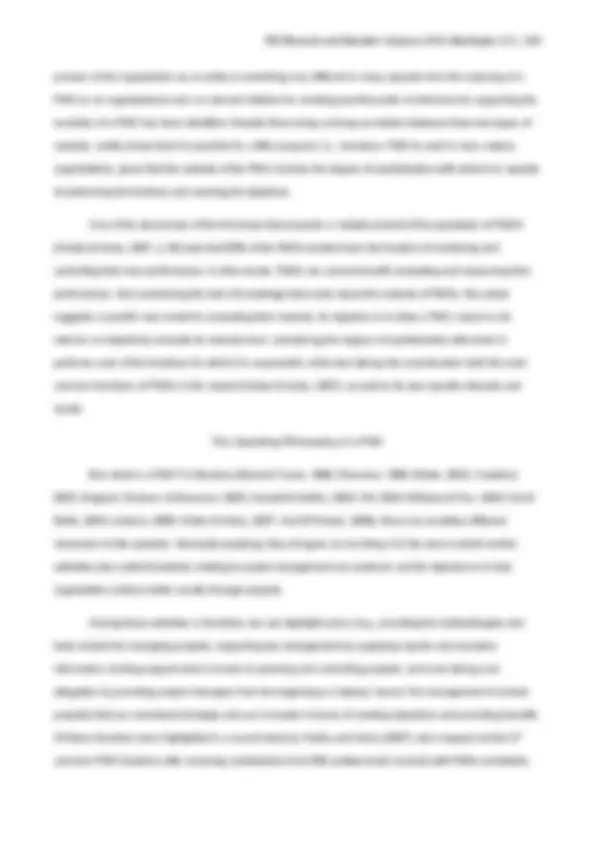
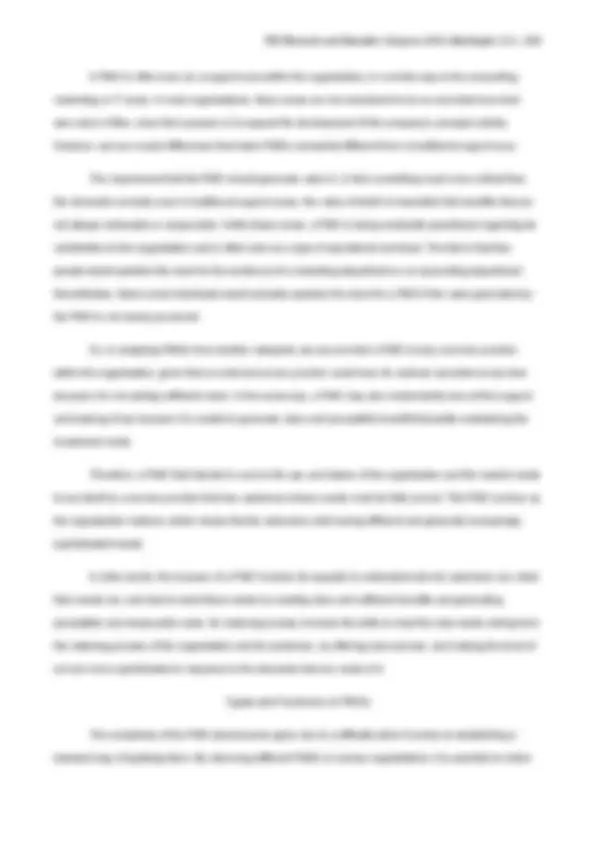
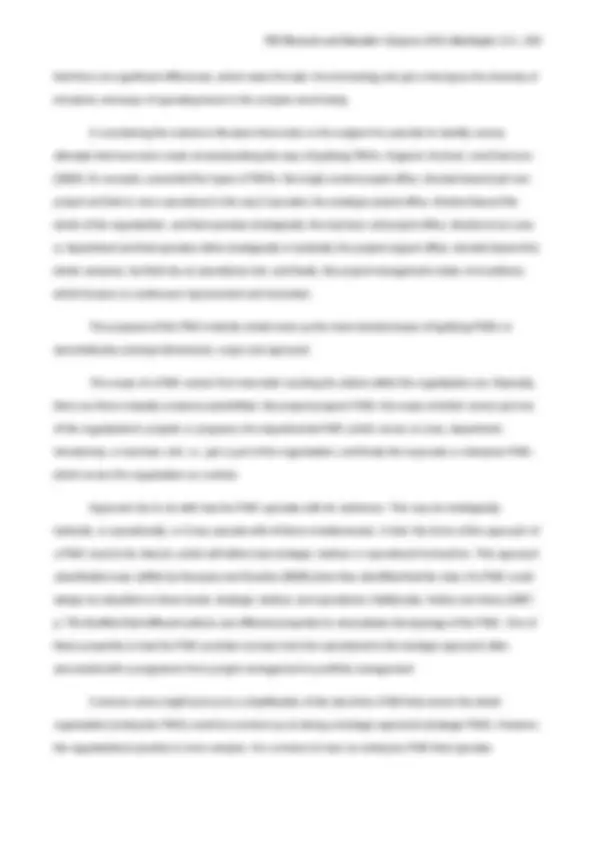
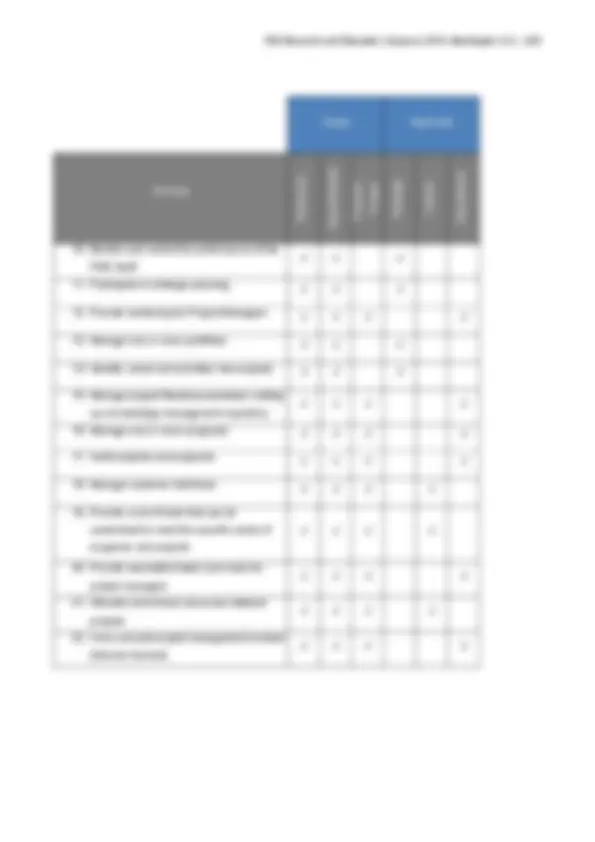
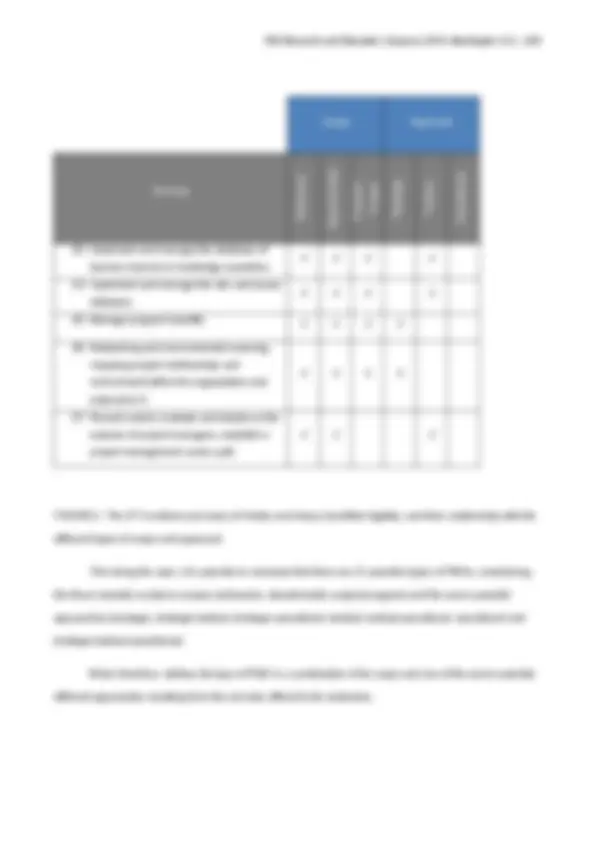
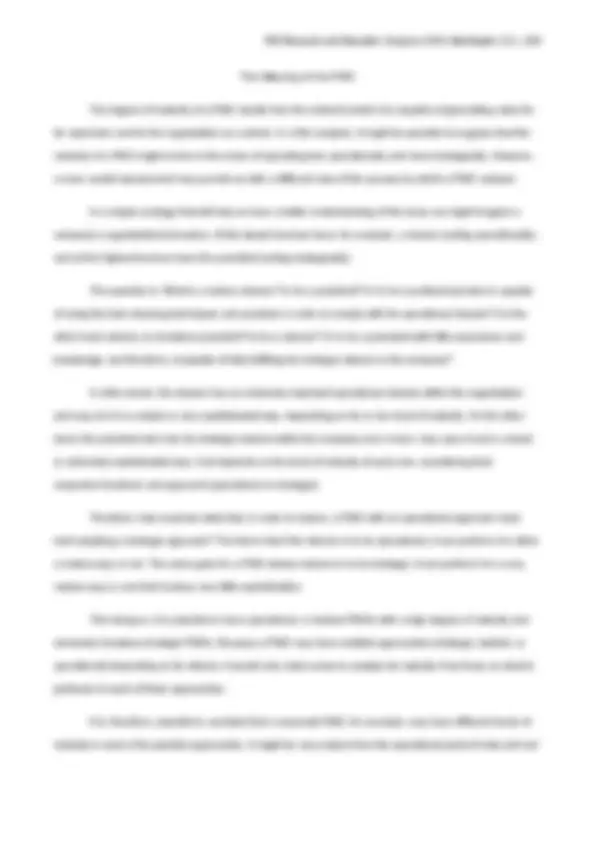
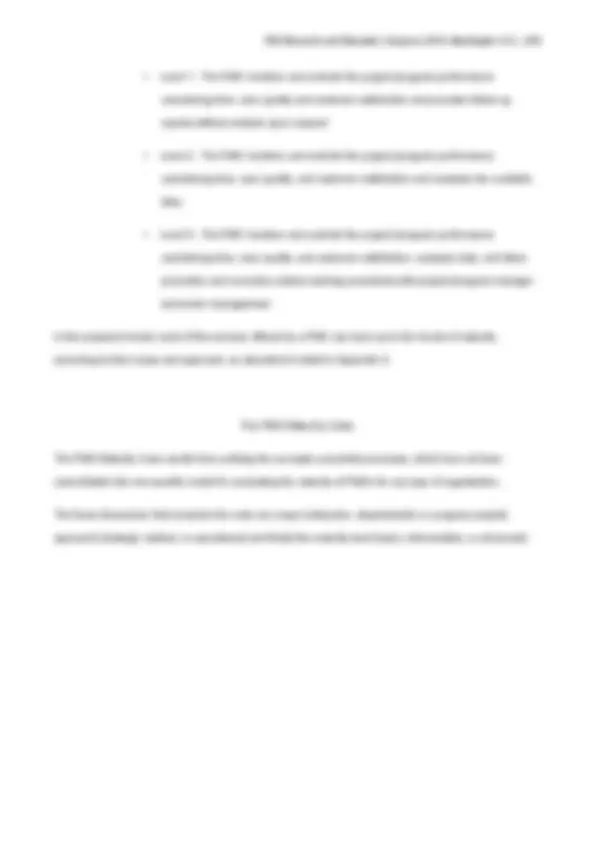
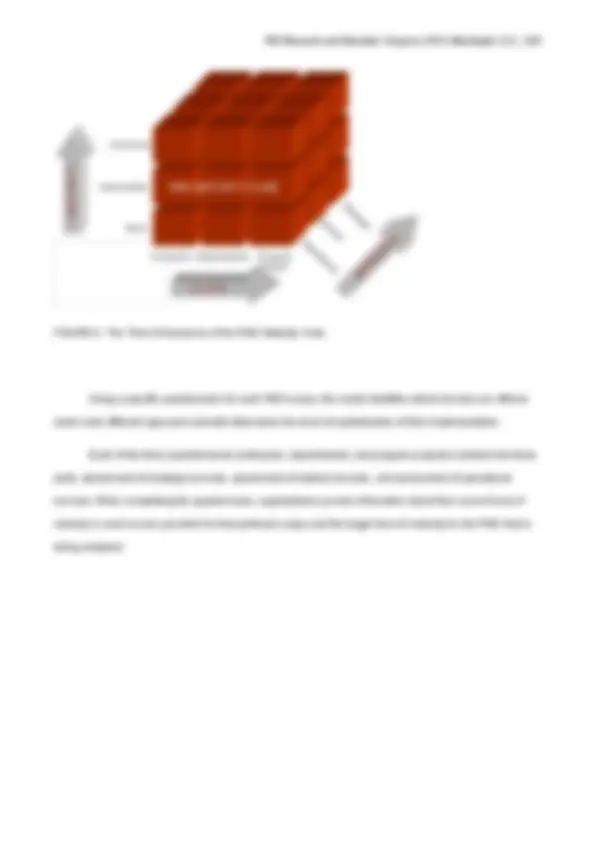
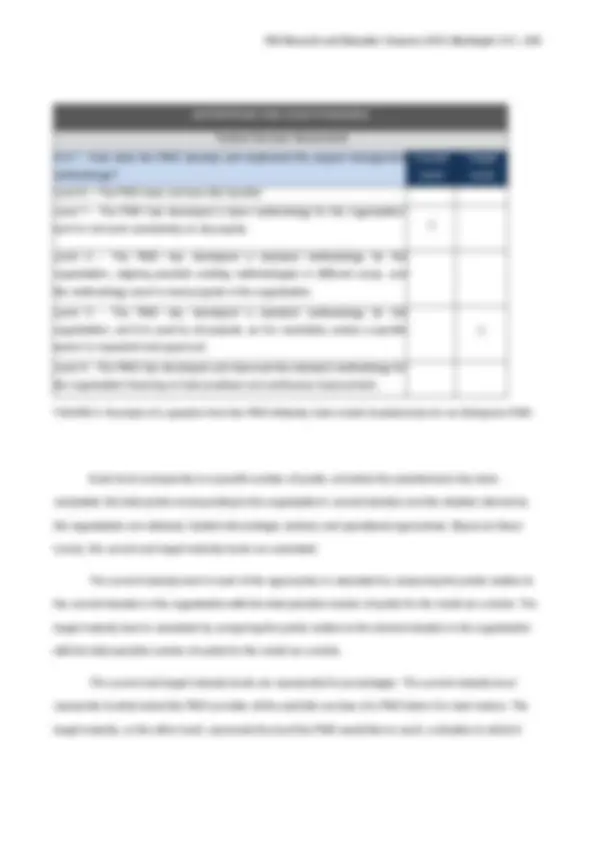
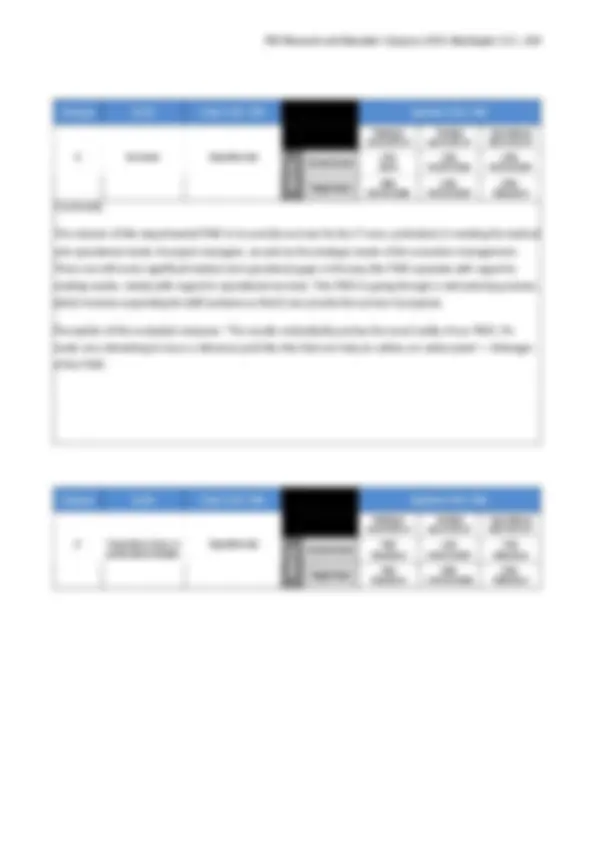
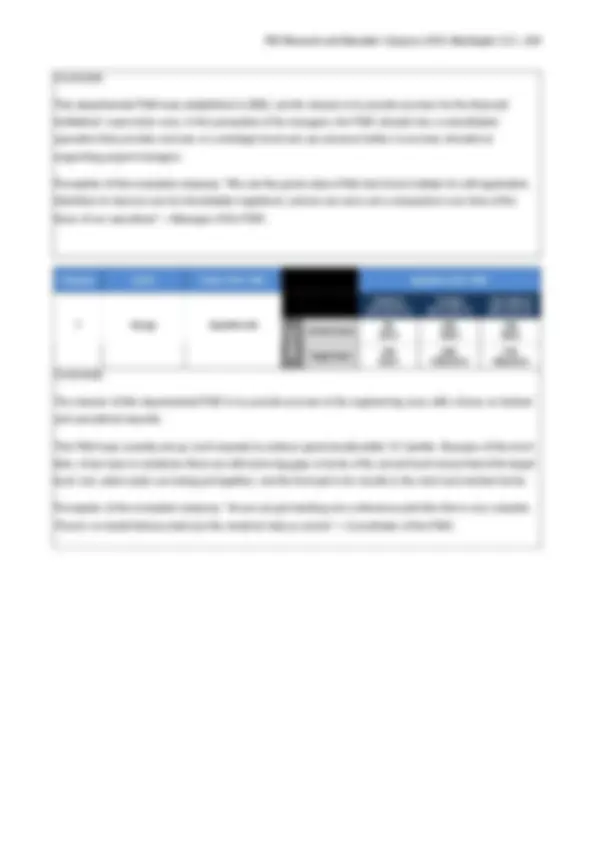

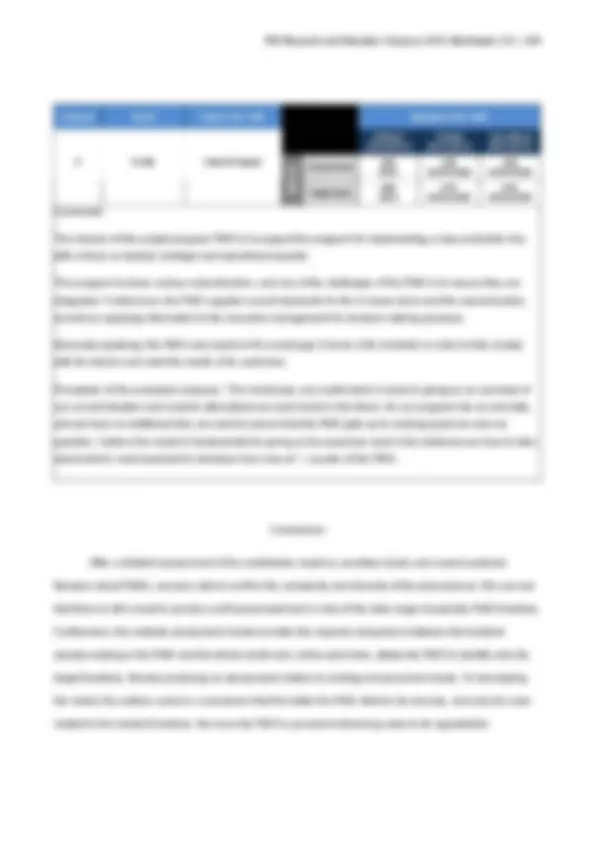



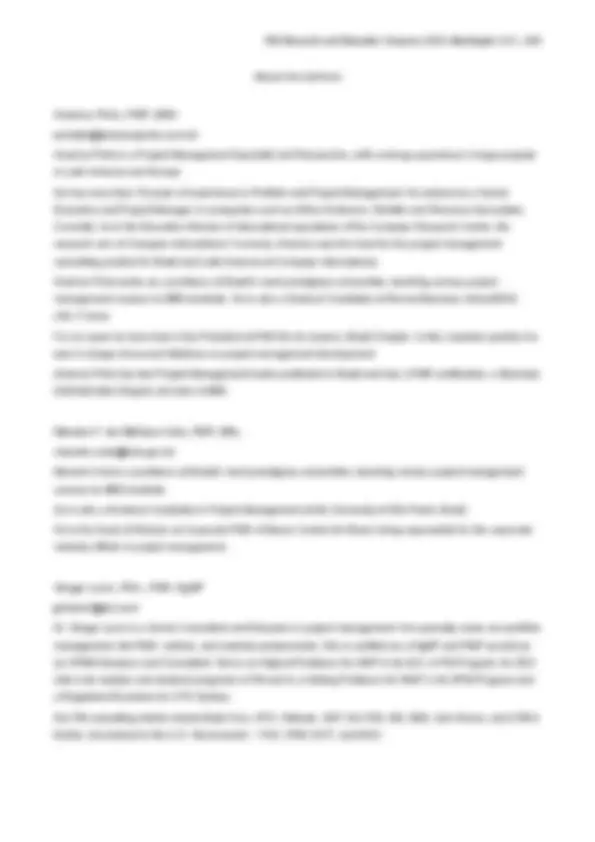

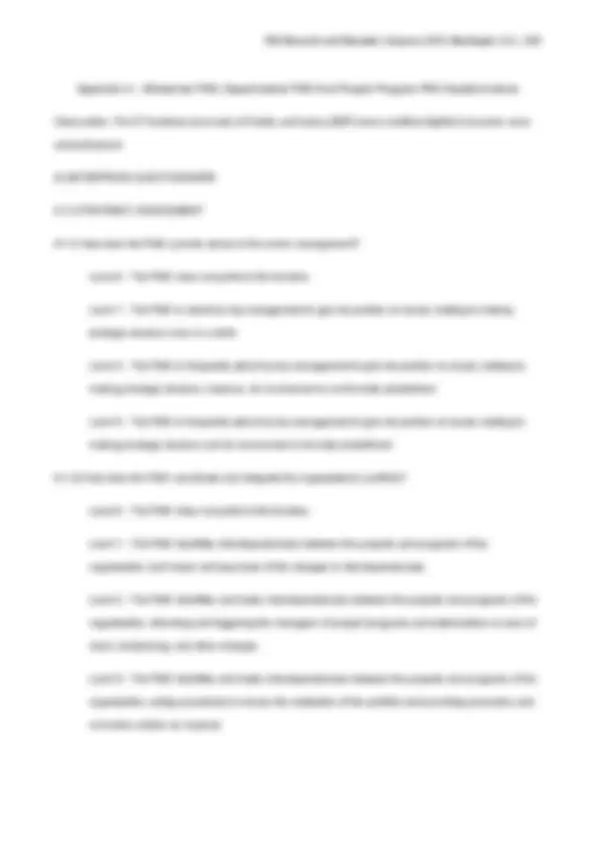
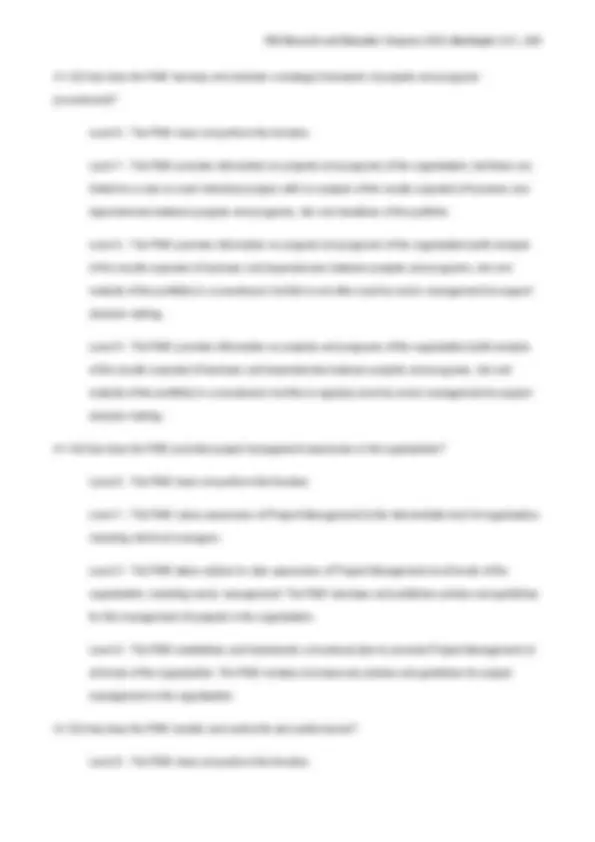

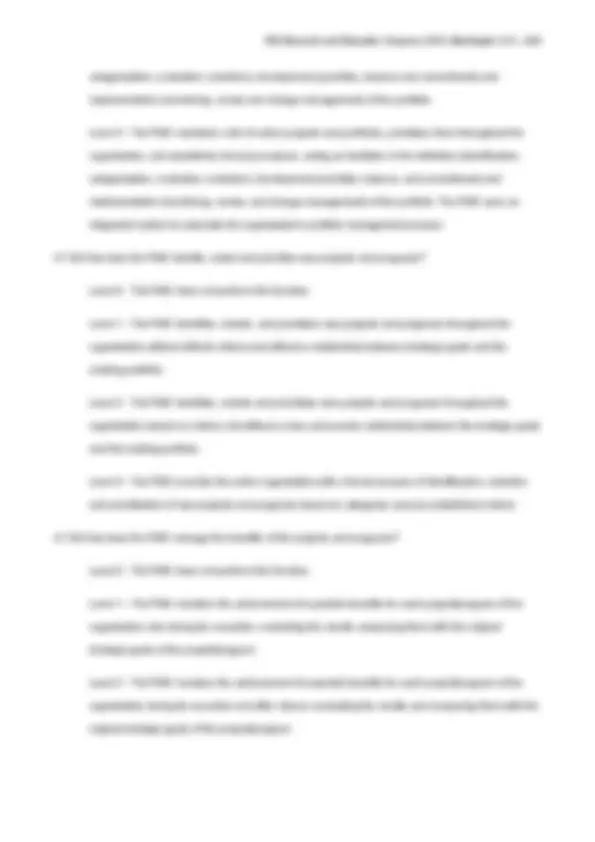
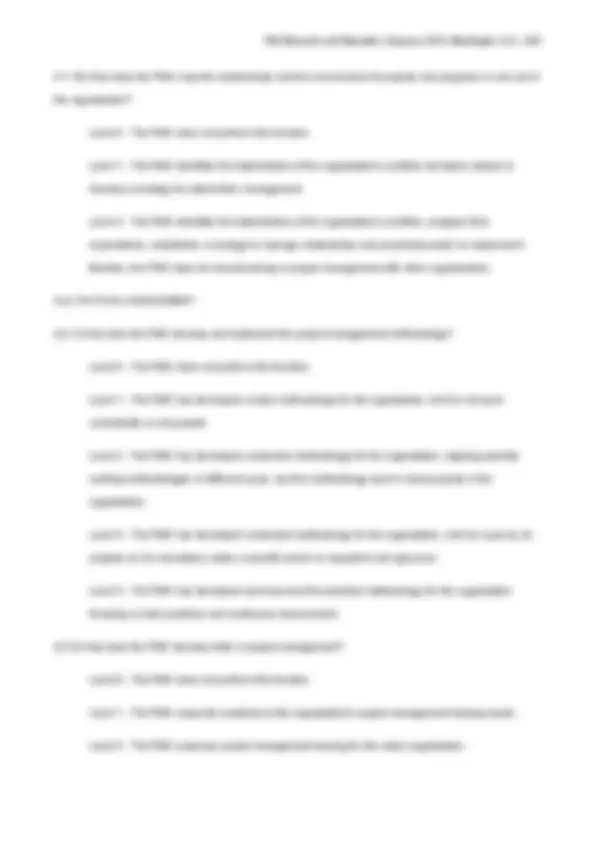
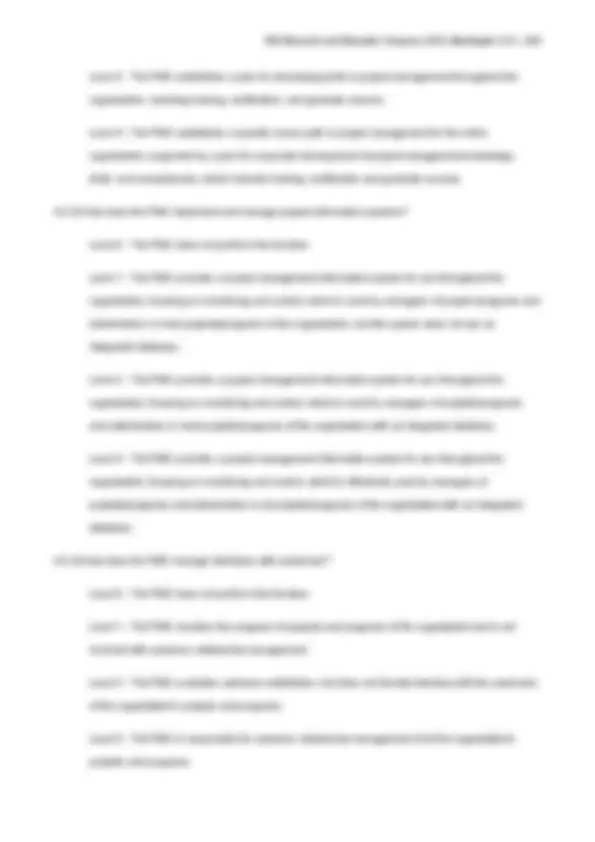
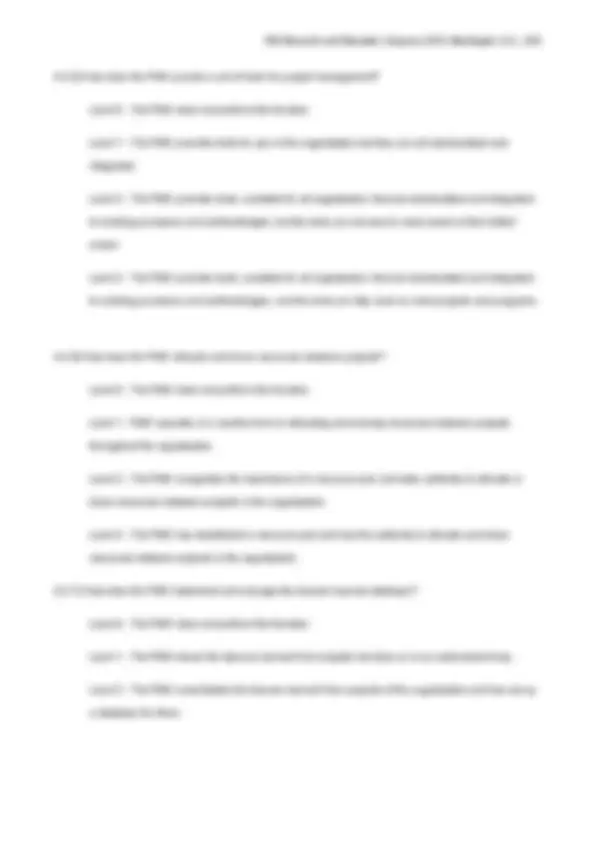

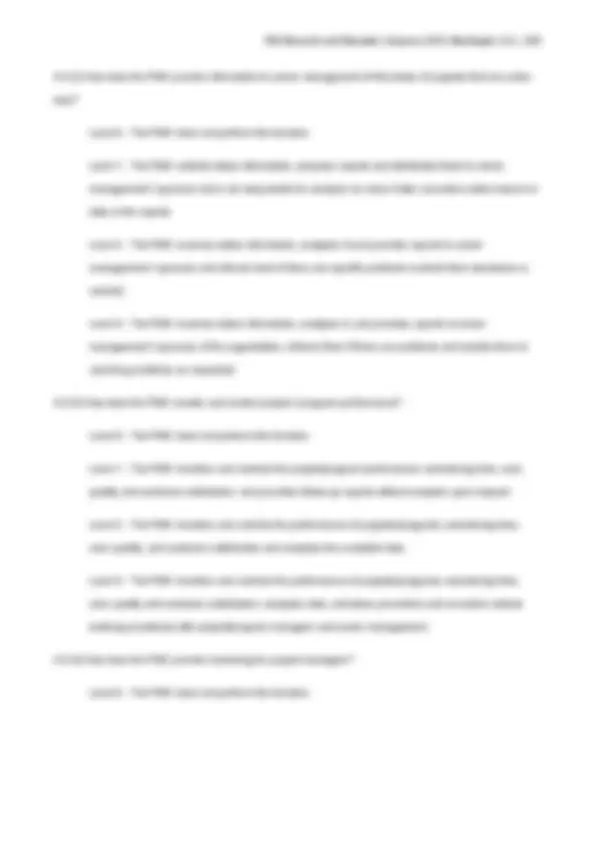
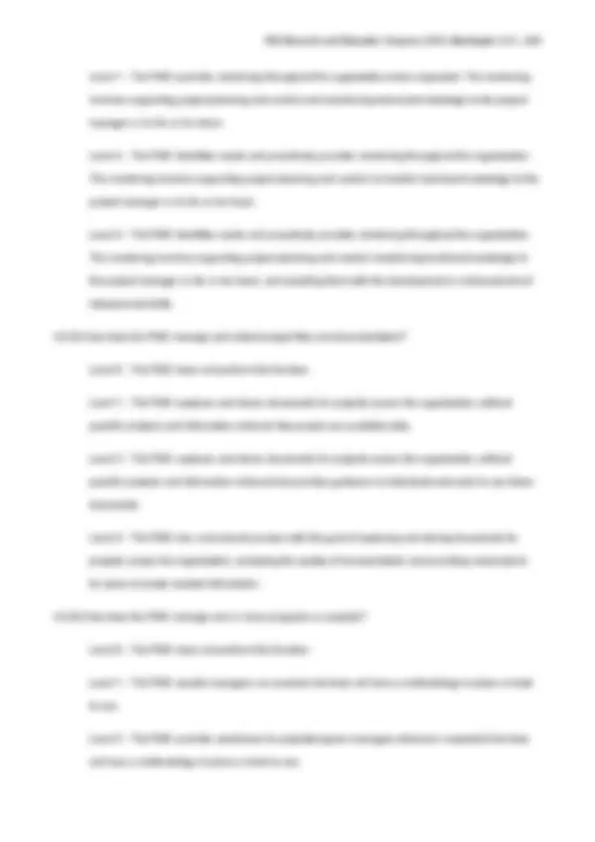
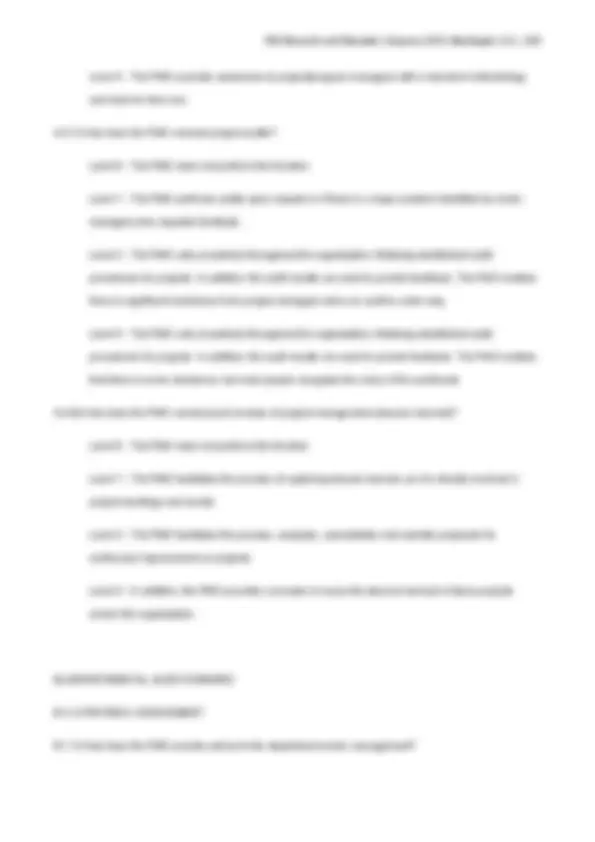
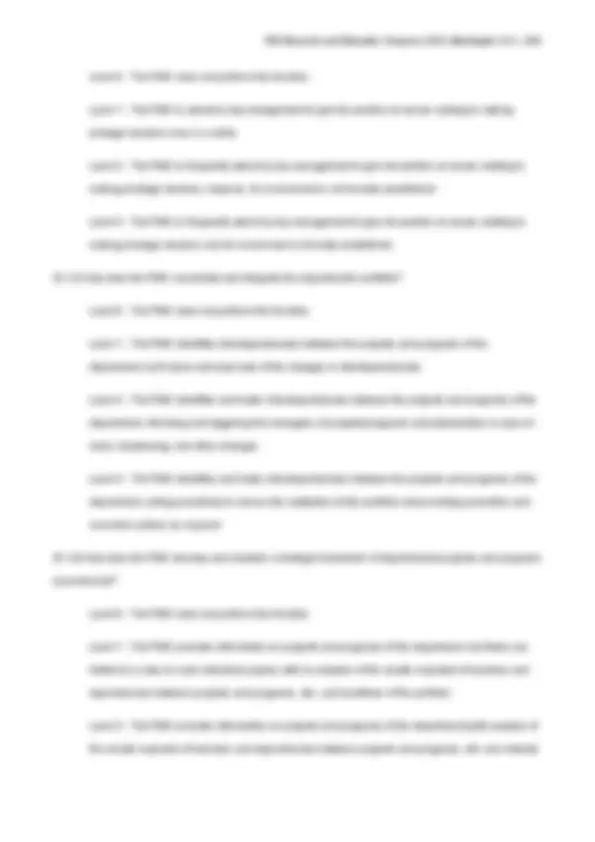
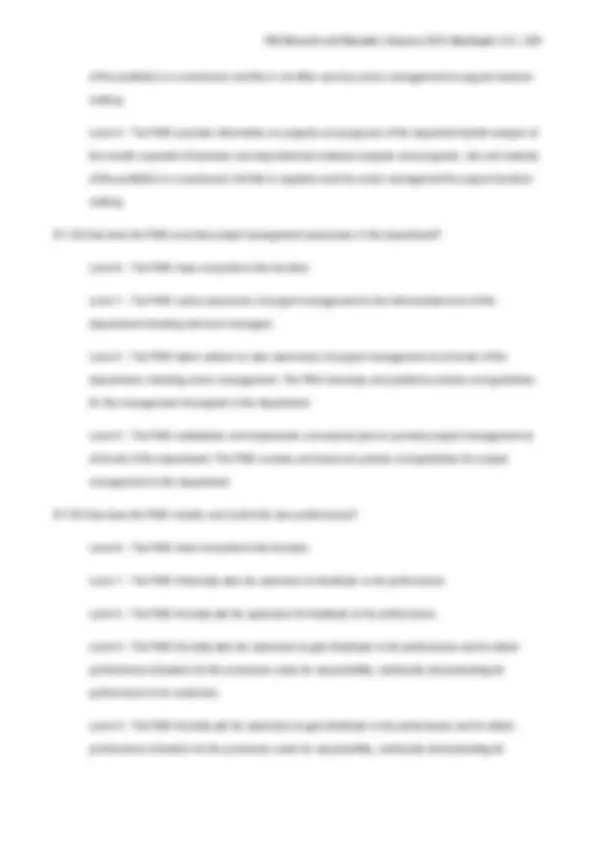
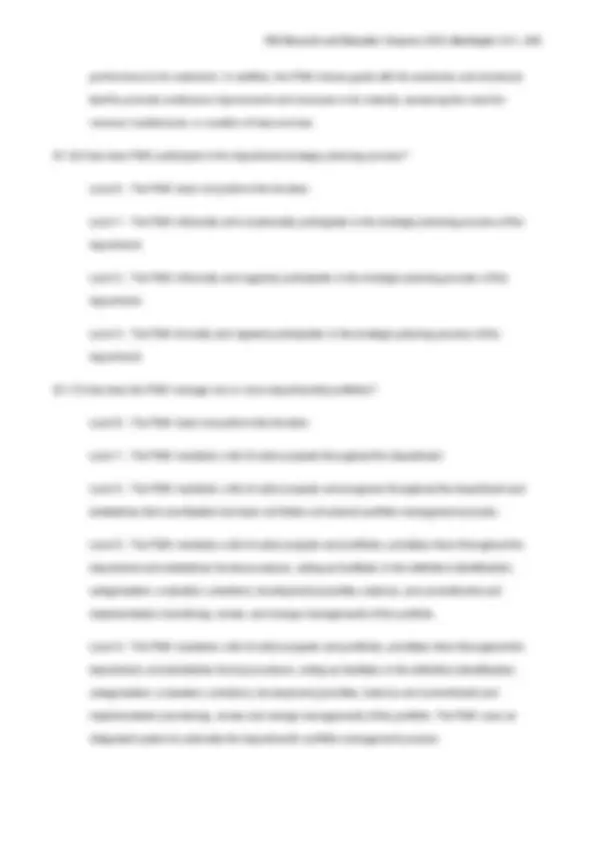
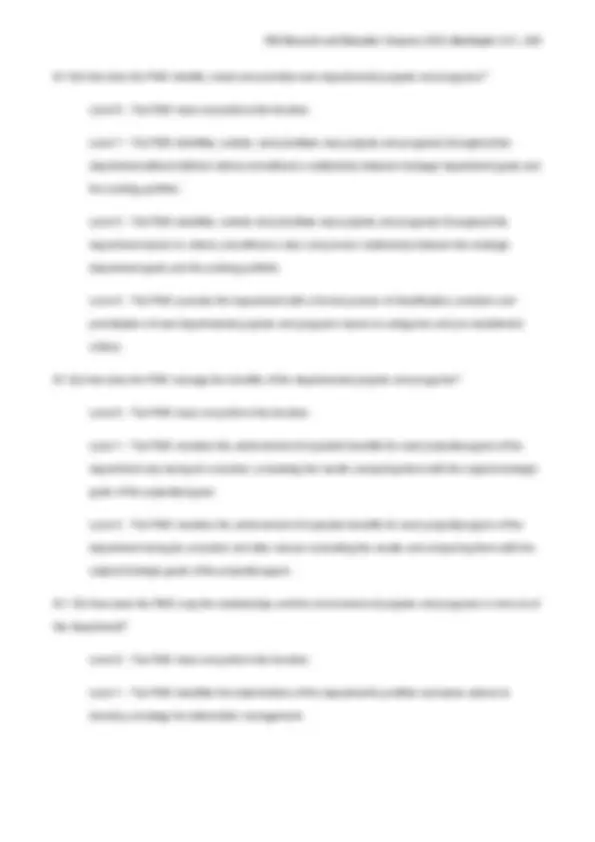
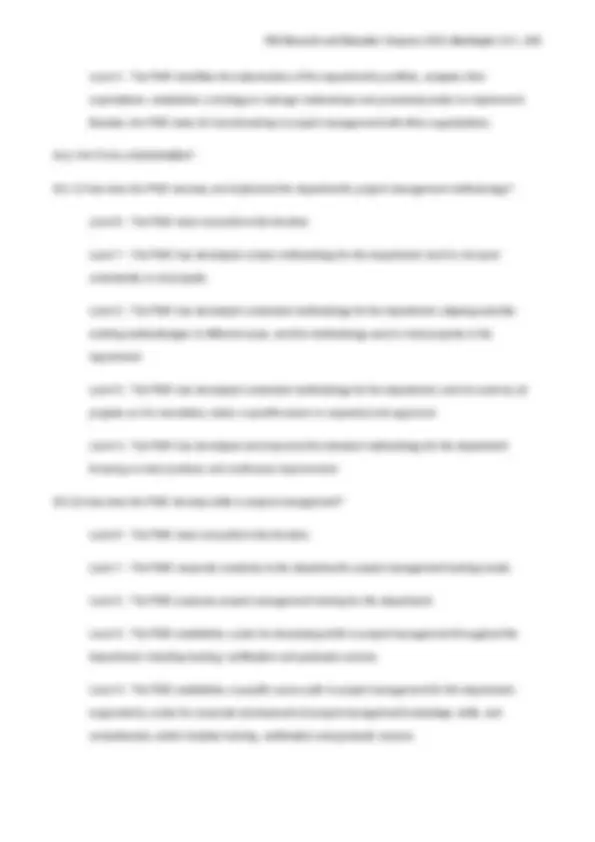
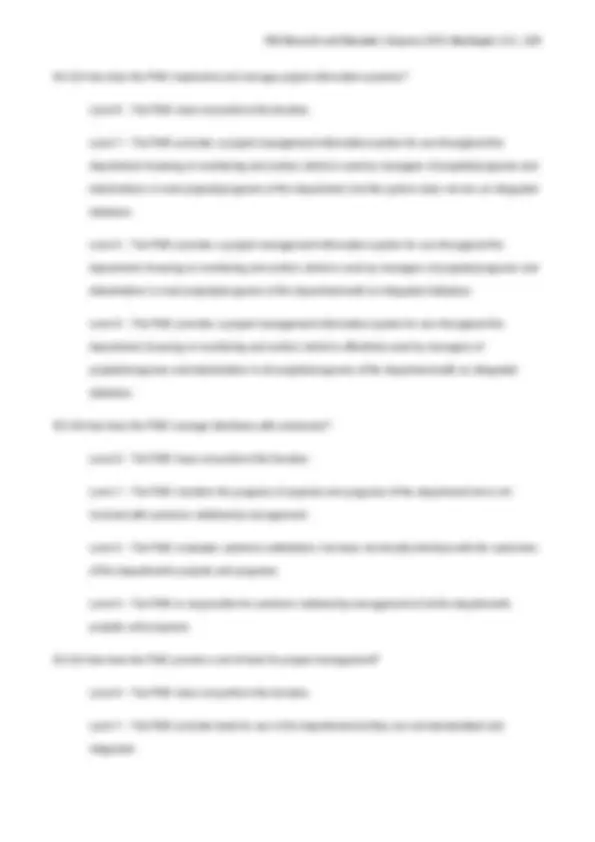


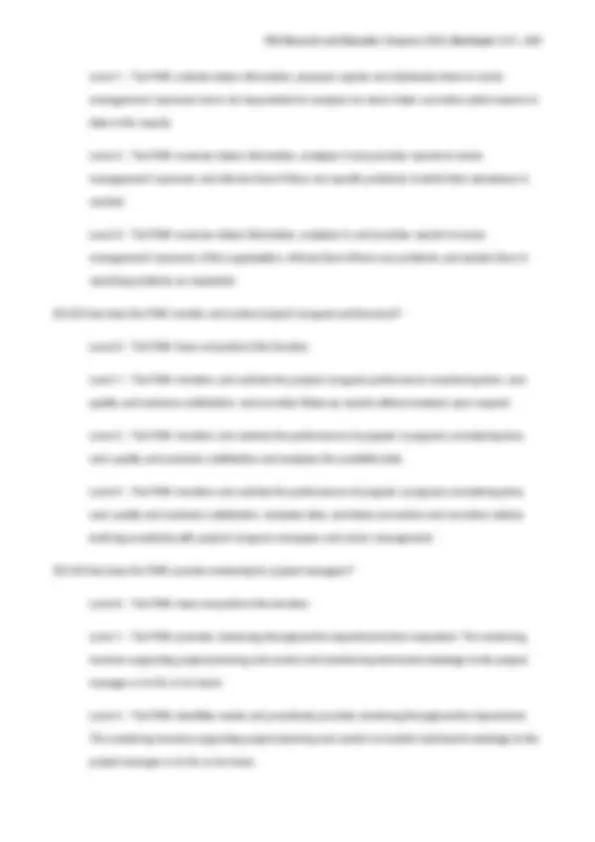



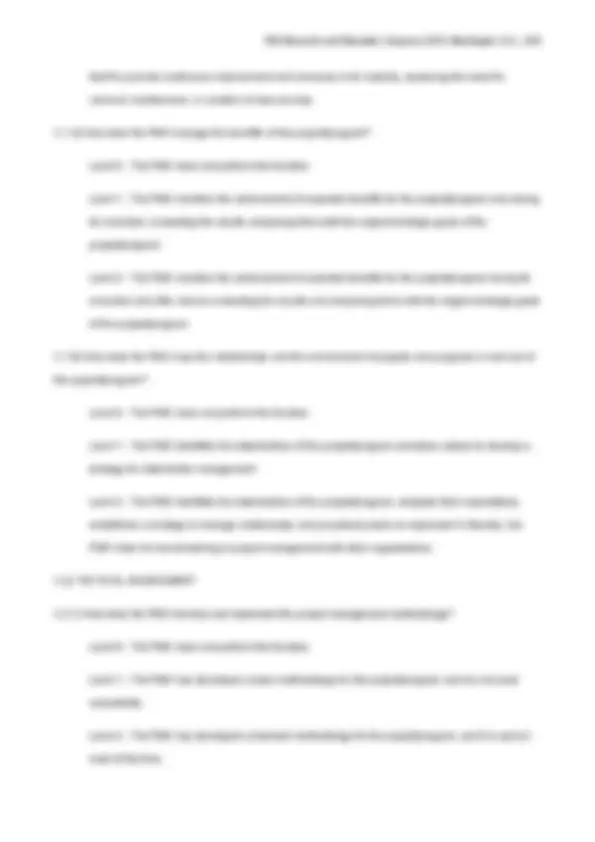
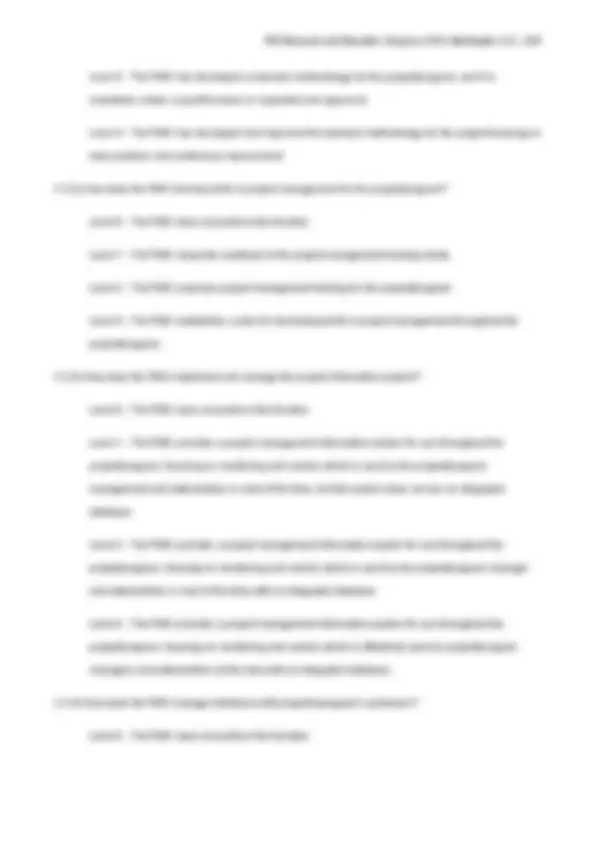
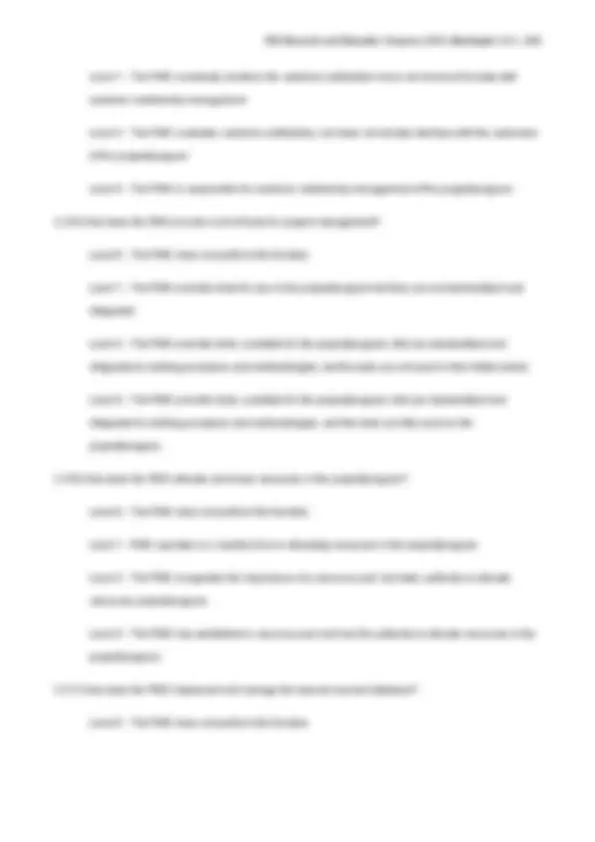


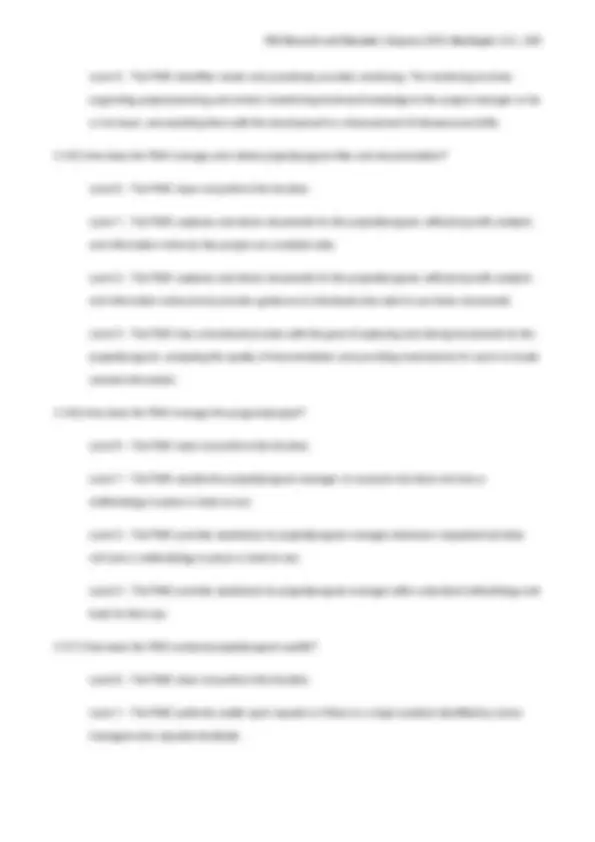



Study with the several resources on Docsity

Earn points by helping other students or get them with a premium plan


Prepare for your exams
Study with the several resources on Docsity

Earn points to download
Earn points by helping other students or get them with a premium plan
Community
Ask the community for help and clear up your study doubts
Discover the best universities in your country according to Docsity users
Free resources
Download our free guides on studying techniques, anxiety management strategies, and thesis advice from Docsity tutors
Perception of the model by the evaluated company: “The model is really useful for providing an overview of how our PMO can evolve in the right direction” — ...
Typology: Exercises
1 / 56

This page cannot be seen from the preview
Don't miss anything!

















































Américo Pinto, Doctoral Candidate, SKEMA Business School, France Marcelo F. De Matheus Cota, Doctoral Candidate, University of Sao Paulo, Brazil Dr. Ginger Levin, SKEMA Business School, France Keywords: project management office, maturity model, maturity, continuous improvement Abstract At the end of the 1990s and the beginning of the 2000s, the theme of project management offices (PMOs) was beginning to be widely discussed in various books (Block & Frame, 1998; Dinsmore, 1999; Bolles, 2002; Crawford, 2002; Englund, Graham, & Dinsmore, 2003; Kendall & Rollins, 2003; Hill, 2004; Williams & Parr, 2004; Letavec, 2006). Studies are more recent in academic literature (Dai & Wells, 2004; Hobbs & Aubry, 2007; Aubry, Hobbs, & Thuillier, 2008; Hurt &Thomas, 2009), and their conclusions about the contribution or value of PMOs are “ambiguous” (Hurt & Thomas, 2009, p. 55). In addition, one of the discoveries in the first study that presents a “reliable portrait of the population of PMOs” (Hobbs & Aubry, 2007, p. 82) was that the function of 50% of the PMOs studied was to “monitor and control their performance.” In other words, PMOs are concerned with assessing and measuring their own performance. Recent qualitative studies (Aubry, Hobbs, & Thuillier, 2008, p. 43) indicated that there is a degree of instability in the historical analysis of PMOs. This is a complex phenomenon and one that demands tools for evaluating the performance and constant reinvention of PMOs. Therefore, a maturity model, as applied to PMOs, was developed and tested with the objective of helping to take an academic discussion to another level of complexity and making it possible for PMOs to carry out their own self-assessment. On developing the model, the authors came to a conclusion that the better the PMO delivers its services, and only the ones related to the needed functions, the more the PMO is perceived delivering value to its organization.
Introduction Since the end of the 1990s, there has been a major movement worldwide toward the creation of PMOs (project management offices) and this has grown in intensity during the present decade (Dai & Wells, 2004, p. 524; Hobbs & Aubry, 2007, p.74). Despite the common perception that a large number of the major companies in the market have, at least one PMO in their organizational structure, Hurt and Thomas (2009, p.
A PMO is often seen as a support area within the organization, in a similar way to the accounting, marketing or IT areas. In most organizations, these areas are not considered to be an area that have their own raison d’être, since their purpose is to support the development of the company’s principal activity. However, we see crucial differences that make PMOs somewhat different from a traditional support area. The requirement that the PMO should generate value is, in fact, something much more critical than the demands normally seen in traditional support areas, the value of which is translated into benefits that are not always noticeable or measurable. Unlike these areas, a PMO is being constantly questioned regarding its contribution to the organization and is often seen as a type of operational overhead. The fact is that few people would question the need for the existence of a marketing department or an accounting department. Nevertheless, these same individuals would probably question the need for a PMO if the value generated by the PMO is not clearly perceived. So, in analyzing PMOs from another viewpoint, we can see that a PMO is truly a service provider within the organization, given that an external service provider could have its contract cancelled at any time because it is not adding sufficient value. In the same way, a PMO may also inadvertently lose all the support and backing it has because it is unable to generate value and perceptible benefit that justify maintaining the investment made. Therefore, a PMO that intends to survive the ups and downs of the organization and the market needs to see itself as a service provider that has customers whose needs must be fully served. This PMO evolves as the organization matures, which means that its customers start having different and generally increasingly sophisticated needs. In other words, the success of a PMO involves its capacity to understand who its customers are, what their needs are, and how to meet those needs by creating clear and sufficient benefits and generating perceptible and measurable value. Its maturing process involves the skills to meet the new needs arising from the maturing process of the organization and its customers, by offering new services, and making the level of service more sophisticated in response to the demands that are made of it. Types and Functions of PMOs The complexity of the PMO phenomenon gives rise to a difficulty when it comes to establishing a standard way of typifying them. By observing different PMOs in various organizations, it is possible to notice
that there are significant differences, which make the task of summarizing into just a few types the diversity of structures and ways of operating found in the complex world today. In considering the extensive literature that exists on the subject it is possible to identify various attempts that have been made at standardizing the way of typifying PMOs. Englund, Graham, and Dinsmore (2003), for example, presented five types of PMOs: the single control project office, directed toward just one project and that is more operational in the way it operates; the strategic project office, directed toward the whole of the organization, and that operates strategically; the business unit project office, directed at an area or department and that operates either strategically or tactically; the project support office, directed toward the whole company, but that has an operational role; and finally, the project management center of excellence, which focuses on continuous improvement and innovation. The proposal of this PMO maturity model sums up the main standard ways of typifying PMOs in essentially two principal dimensions: scope and approach. The scope of a PMO comes from how wide reaching its actions within the organization are. Basically, there are three mutually exclusive possibilities: the project-program PMO, the scope of which covers just one of the organization’s projects or programs; the departmental PMO, which covers an area, department, directorship, or business unit, i.e., just a part of the organization; and finally the corporate or enterprise PMO, which covers the organization as a whole. Approach has to do with how the PMO operates with its customers. This may be strategically, tactically, or operationally, or it may operate with all three simultaneously. In fact, the driver of the approach of a PMO must be its mission, which will define how strategic, tactical, or operational it should be. This approach classification was ratified by Desouza and Evaristo (2006) when they identified that the roles of a PMO could always be classified on three levels: strategic, tactical, and operational. Additionally, Hobbs and Aubry (2007, p. 75) identified that different authors use different properties to characterize the typology of the PMO. One of these properties is how the PMO provides services from the operational to the strategic approach often associated with a progression from project management to portfolio management. Common sense might lead us to a simplification of the idea that a PMO that covers the whole organization (enterprise PMO) could be summed up as taking a strategic approach (strategic PMO). However, the organizational practice is more complex. It is common to have an enterprise PMO that operates
From research published by Hobbs and Aubry (2007), the 27 most common functions of PMOs were identified. These functions represent the major services provided by PMOs and have become the reference point for the models presented in this paper. Considering the definitions for strategic, tactical, and operational approaches and based on the academic and professional experience of the authors, each of these services was evaluated from two aspects: if it was applicable to each and every type of scope of PMO, i.e., if it was valid for enterprise, departmental, and project-program PMOs, and if it was service of a strategic, tactical or operational nature. Scope Approach Services Enterprise Departmental Program
Project Strategic Tactical Operational
Scope Approach Services Enterprise Departmental Program
Project Strategic Tactical Operational
The Maturity of the PMO The degree of maturity of a PMO results from the extent to which it is capable of generating value for its customers and for the organization as a whole. In a first analysis, it might be possible to suppose that the maturity of a PMO might evolve in the sense of operating less operationally and more strategically. However, a more careful assessment may provide us with a different view of the process by which a PMO matures. In a simple analogy that will help us have a better understanding of the issue, we might imagine a company’s organizational structure. At the lowest level we have, for example, a cleaner (acting operationally), and at the highest level we have the president (acting strategically). The question is: What is a mature cleaner? Is he a president? Or is he a professional who is capable of using the best cleaning techniques and practices in order to comply with his operational mission? On the other hand, what is an immature president? Is he a cleaner? Or is he a president with little experience and knowledge, and therefore, incapable of fully fulfilling his strategic mission in the company? In other words, the cleaner has an extremely important operational mission within the organization and may do it in a simple or very sophisticated way, depending on his or her level of maturity. On the other hand, the president also has his strategic mission within the company and, in turn, may carry it out in a trivial or extremely sophisticated way. It all depends on the level of maturity of each one, considering their respective functions and approach (operational or strategic). Therefore, how could we state that, in order to mature, a PMO with an operational approach must start adopting a strategic approach? The fact is that if its mission is to be operational, it can perform it in either a mature way or not. The same goes for a PMO whose mission is to be strategic; it can perform it in a very mature way or one that involves very little sophistication. This being so, it is possible to have operational, or tactical PMOs with a high degree of maturity and extremely immature strategic PMOs. Because a PMO may have multiple approaches (strategic, tactical, or operational) depending on its mission, it would only make sense to analyze its maturity if we focus on what is particular to each of these approaches. It is, therefore, possible to conclude that a corporate PMO, for example, may have different levels of maturity in each of its possible approaches. It might be very mature from the operational point of view and not
very mature from the tactical and strategic points of view. If the mission of this PMO is, in fact, to be operational we can say, therefore, that it is aligned with its objectives and generating the value expected by the organization. If we consider, therefore, that the PMO generates value through the functions it exercises, which are translated into service for its customers, the maturity of a PMO may be summed up as being the degree of sophistication with which it provides each service for which it is responsible. In other words, there are different ways of providing a certain service: from the most trivial and simple manner, which adds little value to the organization, to a more sophisticated and complex way, which translates into more noticeable results and provides the organization as a whole with greater value. To devise the maturity evaluation model that is proposed in this article, each of the 27 services (adapted from the most common functions in PMOs, as presented by Hobbs and Aubry, 2007) was analyzed to establish how applicable they were to the three different types of PMO scope: enterprise, departmental, program-project (Figure 2). Then, each of the services was analyzed as to their possible different levels of sophistication for carrying them out, from the most trivial way to the most complicated. This determines the degree of maturity when carrying it out. Some of the services of an enterprise PMO can be seen in the following: Service: A.1.7 - Managing one or more portfolios (Scope: Enterprise/Approach: Strategic) Levels of maturity in carrying out the service:
FIGURE 3. The Three Dimensions of the PMO Maturity Cube Using a specific questionnaire for each PMO scope, the model identifies which services are offered under each different approach and with determines the level of sophistication of their implementation. Each of the three questionnaires (enterprise, departmental, and program-project) is divided into three parts: assessment of strategic services, assessment of tactical services, and assessment of operational services. When completing the questionnaire, organizations provide information about their current level of maturity in each service provided for that particular scope and the target level of maturity for the PMO that is being analyzed.
would fully adhere to its objectives and mission, considering only those services that are really of interest to it in the target maturity levels. Maturity levels with percentages between 0% and 33% are considered basic. Levels between 34% and 66% are considered intermediate. Finally, maturity levels between 67% and 100% are considered advanced. To illustrate this approach, we present real case studies where the PMO maturity cube model has been applied. All these companies were invited to participate and the authors coordinated the application of the model during a formal meeting. The questions were answered by the PMO’s leaders supported by their teams. At the end, the leaders were asked for a quick comment about the experience, including their perception about the strengths and weaknesses of the proposed model. Based on this feedback, the authors promoted adjustments in the model and reapplied the questionnaire in these same companies, obtaining these final numbers and the PMO’s leaders comments about the experience of applying the model presented in the following. Company Sector Scope of the PMO Approach of the PMO Strategic assessment Tactical assessment Operational assessment A Consumer goods Enterprise Current level (^) Basic33% Intermediate 41% Intermediate 57% Maturity Target level 53% Intermediate 62% Intermediate 65% Intermediate Comments: The mission of the enterprise PMO evaluated is to serve the needs of project managers, line managers, and top management. Today, the main operating focus of the PMO is still concentrated on operational support services and project planning and control. However, the PMO wants to assume more and more tactical and strategic functions. Perception of the model by the evaluated company: “The model is really useful for providing an overview of how our PMO can evolve in the right direction” —Manager of the PMO.
Company Sector Scope of the PMO Approach of the PMO Strategic assessment Tactical assessment Operational assessment Current level (^) Intermediate48% Intermediate^ 44% Basic^ 25% B Financial services Enterprise Maturity Target level 59% Intermediate 57% Intermediate 29% Basic Comments: This enterprise PMO has been operating since 2004 and is strategic and tactical in nature, with few operational functions. Its objectives are to evolve more strongly in functions relating to portfolio management, in addition to continuing to evolve and spread project management practices to all the organization’s corporate projects. Perception of the model by the evaluated company: “An excellent instrument for self-assessing the maturity of the PMO. The model allowed us to see more clearly exactly where we are and where we can get to”— Executive Manager of the PMO. Company Sector Scope of the PMO Approach of the PMO Strategic assessment Tactical assessment Operational assessment C Telecommunications Enterprise Current level (^) Intermediate53% Intermediate 65% Basic 15% Maturity Target level 83% Advanced 75% Advanced 25% Basic Comments: The mission of this enterprise PMO is to meet the needs of top management, as well as providing methods, standards, and resources that can be used by projects in the organization. The main objective of this PMO over the next few months is mainly to increase its maturity in the strategic area. Perception of the evaluated company: “A very good model. Practical, objective and well grounded. It will undoubtedly be very valuable for our development” —Manager of the PMO.
Comments: This departmental PMO was established in 2002, and its mission is to provide services for the financial institutions’ supervision area. In the perception of its managers, the PMO already has a consolidated operation that provides services on a strategic level and can advance further in services directed at supporting project managers. Perception of the evaluated company: “We see the great value of this tool since it allows for self-application, intentions to improve can be immediately registered, and we can carry out a comparison over time of the focus of our operations” —Manager of the PMO. Company Sector Scope of the PMO Approach of the PMO Strategic assessment Tactical assessment Operational assessment Current level (^) Basic9% Basic^ 35% Basic^ 18% F Energy Departmental Maturity Target level 19% Basic 68% Advanced 75% Advanced Comments: The mission of this departmental PMO is to provide services to the engineering area, with a focus on tactical and operational aspects. This PMO was recently set up, but it expects to achieve great results within 12 months. Because of the short time, it has been in existence there are still some big gaps in terms of its current level versus that of its target level, but, action plans are being put together, and the forecast is for results in the short and medium terms. Perception of the evaluated company: “As we are just starting out a reference point like this is very valuable. There’s no doubt that we shall use the model to help us evolve” —Coordinator of the PMO.
Company Sector Scope of the PMO Approach of the PMO Strategic assessment Tactical assessment Operational assessment Current level (^) Basic15% Intermediate^ 49% Intermediate^ 58% G Retail Project-Program Maturity Target level 0% Basic 49% Intermediate 58% Intermediate Comments: The mission of this project-program PMO is to support the organization’s SAP implementation project, with a particular focus on operational and tactical aspects. This is an outsourced PMO so its functions are predefined in the contract with the customer. So, from the tactical and operational points of view, the PMO’s current levels of maturity are fully aligned with the target levels, given that this is necessary in order to comply with the contract’s statement of work and terms and conditions It is interesting to note that when the model was being applied that this PMO is providing some of the strategic services. However, these do not fall within the scope of the contract and may mean that the PMO is losing focus in its operations. Therefore, we conclude that in the strategic area the PMO may “regress,” given that the target level is 0%, i.e., fully discontinuing any service of this nature. In this way, the PMO will begin to be fully aligned with its mission, which is to provide the tactical and operational services that have been pre- defined by contract. The organization further may wish to re-evaluate the operation of the PMO and decide to establish a PMO that is staffed by people who work for the corporation in order to perform the strategic mission of a PMO and using contractor support to focus on operational and tactical aspects. Perception of the evaluated company: “The model helped us see that we were using our resources for activities that were not part of our objective. Our problem was not a lack of resources, but the poor use of those resources. Instead of focusing on our main objective we’ve discovered that we are becoming less efficient in other activities that, in fact, in activities that our customer does not expect us to provide” —Director of the consultancy company.